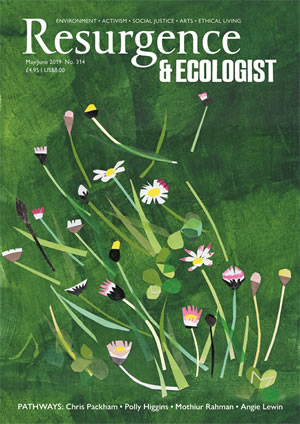When Bob Gilbert’s wife is appointed priest in the London parish of Poplar, he begins his own evangelical mission: to trace the history of the district through its trees.
Gilbert sets out one wet April to walk every street in the parish, and embarks on a journey that shows London’s relationship with Nature at its best and worst.
We meet many arboreal ghosts, the most significant of which is the black poplar. Gilbert’s search for the tree on his patch is in vain. But much has changed since the district’s eponymous tree first sprang up there in 1327.
Poplar isn’t the landscape it was: a wild, wide and windswept area of estuarine marshes. This wetland habitat was perfect for the tree, which flourished along its creeks and channels. A hint of this wild past appears at random; amid the high-rise, even Londoners’ view of the sky has been appropriated. And the local authority uses the incorrect tree as its official emblem.
Gilbert’s walks uncover sterile developments patrolled by private security, and birdsong fighting the roar of the Blackwall Tunnel approach road. We find landowners lacking in imagination or sensitivity to what was. And Gilbert despairs at the ever-shrinking square footage of city-dwellers’ outdoor space, in the shape of balconies as well as the regulated communal areas where budgets are spent on chemicals to oust foxes.
Hoardings boast environmental credentials, but Gilbert shows new development serving city-dwellers an “IKEA version” of Nature that is “entirely clean” and to which we have no spiritual connection.
Not long ago, in these same places, osiers were grown for the baskets that transported home-grown apples, strawberries and cherries to London’s markets.
Gilbert records 94 species and cultivars of tree in Poplar from the world over. This is testament to London’s human diversity. But it’s more than this: it demonstrates how our sense of home is intrinsic to being close to trees and plants that mean something to us culturally, historically, or because they featured in our childhood.
We find East End vines and figs planted by the Huguenots who made the city home after fleeing persecution, and the brown mustard plant introduced by the Bengali community in the 1960s.
London needs visionaries who will fight for these meaningful relationships. Gilbert introduces us to Ada Salter, appointed mayor of Bermondsey in 1922, who believed being truly human meant valuing Nature. She saw the cultivation of flowers and trees as a civic duty and brought plants to every street in the borough, inspiring cities across Europe.
So it is not the trees that are ghosts, but we humans. Or perhaps what’s dying is the idea that it’s Nature that allows us to connect to each other.
Nature resurrects itself, as we see plainly in Gilbert’s descriptions of swatches of unruly places with their sow thistles and cushions of moss. Without more “socialism with flowers”, we will become abstractions in a virtual world. And London is “after all only of brick”, as Richard Jefferies said. Nature is merely waiting out its exile beneath the skin of concrete.
The book ends with a beautifully moving account of the community planting a black poplar. It could be Poplar’s Yggdrasil, holding everything together by its branches and roots. Norse mythology tells us that when Yggdrasil thrives, so does the cosmos.
The tree stands, perhaps, as a protest against the worst that the city has become, and an act of hope that the future will be better.






